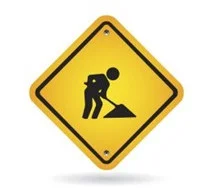
Tips/Advice The Biz Coverage
The Art of Critique: Providing constructive & actionable feedback
by Michael Sweeney
Article, 3 pages
Viewed by: 21 Residents and 7 Guests
The Art of Critique:
Providing constructive & actionable feedback
by Michael Sweeney
It can be difficult giving fellow creatives notes. The screenwriting process is a deeply personal experience, if done properly, and there’s a lot of time and effort that goes into crafting even the seemingly simplest of stories.
Therefore, it’s important to remember, like when reading a script, that providing notes requires you to use tact, be as clear as possible, and know your audience.
Before you even begin to read someone’s script, be sure that they are open to taking notes and suggestions. This might seem obvious, but if someone is trying to get you to read something for the purposes of praise, there’s nothing you can say to positively impact the evolution of the script.
The following are a few of the critical baseline skills needed when crafting script feedback and critiques:
1) ASK QUESTIONS

For anyone who has seen the show Ted Lasso, you may remember a certain dart throwing scene in which the titular character recalls a conversation with his father that encouraged him to be curious and not judgmental. It’s very often that note givers want to impose their own will on a script or project before really understanding what the writer is trying to get across. However, having a sense of curiosity is vital because it will help you better guide someone towards a solution that will actually work.
Good storytelling aims to convey a unique perspective or a poignant theme, and if the script is imperfect in some way, then it means two things. 1. The intention of the writer isn’t being received. 2. In order for the reader to give notes that will actually allow the script to flourish, they must understand what the intention of the story is.
AN EXAMPLE:
For example, in a recent script I covered for a client, I found the protagonist to be incredibly inconsistent. His interests and career didn’t seem to align with the subject matter of the main plot, and the reason that he becomes entangled in the story in the first place (a family matter) fell into the background. However, in order for me to confidently have a dialogue with the writer, I needed to understand his intentions. If the initial interests of the main character are vital to the story, it would be shortsighted of me to simply suggest cutting that element.
2) SUMMARIZING THE PLOT

This tactic is a little tricker, but it’s one I like to use with clients, especially when their script is well written or facing an immense identity crisis. I always view summaries as ways for the writer to understand how their material is coming across to a reader, by way of the note giver providing their own perception on what the script is truly about at its core. If that’s not what the writer intended, it’s a clear sign that something is getting lost in translation.
Alternatively, if you hit the nail on the head and accurately interpret what the reader is trying to convey, it provides the reader with a sense of clarity that they are headed in the right direction. Either way, what you’ve done is started a conversation that will reveal the primary themes of the story and the angle the writer wants to take with their protagonist. This is also an effective way for the writer to understand what they are prioritizing in the story.
AN EXAMPLE:
An example in my own writing came in the form of a summary of my thesis script back in college. A fellow student summarized my script in which they spent so much time embellishing the personas of the supporting cast, rather than the duo of protagonists I’d established. That led me eventually to completely cut the main characters and bring the side characters and their story into the foreground. That was never given as a note as my classmates wanted to help me work with what I had established, but this slight reset was the actual key to unlocking the most interesting story in the world that I’d built.
3) ACCESS WHAT’S NOT WORKING

With the above being said, there’s also a point in which, as an analyst (or anyone giving notes) you do have to be blunt but honest about elements that aren’t working. However, many people use phrases like “I think you should do this…” or “what if the character did that?” Or even: “have you ever considered this?” While these phrases are not entirely inappropriate, I like to identify elements I didn’t understand.
If you ask the writer in question “what is the protagonist’s arc?” that sends a clear message to them that the overall change in their character isn’t strong enough. Or, if you remark “I didn’t understand how this aspect of the world worked,” it gives them the clear signal that they need to clarify certain elements of their world building.
This gives you the ability to both be honest about how you felt about the story, but also allow them the agency to see the areas of improvement and take it upon themselves to determine the best way to resolve that, instead of having a litany of notes that precede with “you should do this.” Identifying the areas of improvement in the story from most significant to least will also enable the writer to prioritize certain changes over others.
4) GIVE ACTIONABLE ADVICE

If a writer gives you free reign to provide suggestions as to how to proceed, be very careful with your wording. Telling someone, for example, that their characters are one dimensional, may not result in the desired effect. Instead, I have defaulted to the “I feel” statement. “I feel” as though the character doesn’t have a strong connection to their world, therefore could I suggest… and so on. Because remember, writers are not obligated to take any of your notes. They are allowed to pick and choose the ones that will work best for them.
5) BE GENTLE
Lastly, and probably most importantly, be gentle. I always pretend as though I’m talking about a person when addressing issues in a screenplay. It’s not about flaws and problems, but more “areas for growth,” and how one can better communicate a thought, or express a feeling. In my own personal experience, there have been moments I’ve realized I have no idea why I’m writing said script anymore. Or, I’ve realized I had to cut my favorite scene because that was what was holding the story back. Even something as simple as feeling unmotivated to continue; be encouraging, be curious, and be interested in their point of view. Every script is trying to convey something poignant, at least in my opinion, and striking the proper tone when examining one will fast track it to success. The writer is exhausted. You, as the reader/note giver, are coming in fresh. Let that pave the way for thoughtful, engaging, and forward thinking notes.
-------------------------
ABOUT MICHAEL SWEENEY
 My name is Michael Sweeney and I am a professional script reader and analyst with nearly a decade of experience in development. Having worked with companies like Netflix, coverage services like ScriptHop’s “The Gauntlet,” and film festivals like The Austin Film Festival, I have a unique perspective on the vast and varying nature of how scripts impress upon readers and most importantly how they can get your foot in the door. I believe in a constructive and collaborative approach to story analysis that encourages growth and development.
My name is Michael Sweeney and I am a professional script reader and analyst with nearly a decade of experience in development. Having worked with companies like Netflix, coverage services like ScriptHop’s “The Gauntlet,” and film festivals like The Austin Film Festival, I have a unique perspective on the vast and varying nature of how scripts impress upon readers and most importantly how they can get your foot in the door. I believe in a constructive and collaborative approach to story analysis that encourages growth and development.
My philosophy is to always question before I judge. My specific style challenges you to look deeper into the areas of your script that may not be working and ponder why. After all, it’s not my script, so who am I to tell you how to fix it? Only you can do that. What I do is provide a candid and straightforward rating based on industry standards, coupled with notes based around technique, pace, development, and overall quality of story.
My goal is the same as yours, to see your vision come through on the page as you intended it, in order to communicate with an audience.




